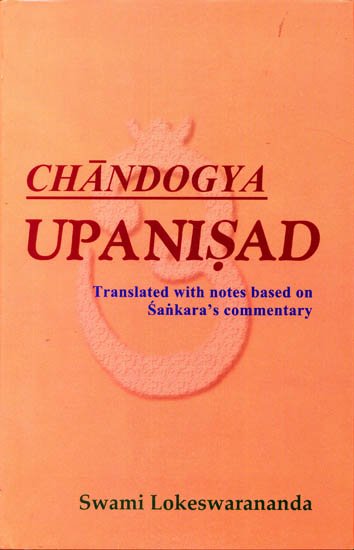Chandogya Upanishad (english Translation)
by Swami Lokeswarananda | 165,421 words | ISBN-10: 8185843910 | ISBN-13: 9788185843919
This is the English translation of the Chandogya-upanishad, including a commentary based on Swami Lokeswarananda’s weekly discourses; incorporating extracts from Shankara’s bhasya. The Chandogya Upanishad is a major Hindu philosophical text incorporated in the Sama Veda, and dealing with meditation and Brahman. This edition includes the Sanskrit t...
Verse 5.1.15
न वै वाचो न चक्षूंषि न श्रोत्राणि न मनांसीत्याचक्षते प्राणा इत्येवाचक्षते प्राणो ह्येवैतानि सर्वाणि भवति ॥ ५.१.१५ ॥
॥ इति प्रथमः खण्डः ॥na vai vāco na cakṣūṃṣi na śrotrāṇi na manāṃsītyācakṣate prāṇā ityevācakṣate prāṇo hyevaitāni sarvāṇi bhavati || 5.1.15 ||
|| iti prathamaḥ khaṇḍaḥ ||15. Scholars do not call them organs of speech, eyes, ears, or minds. They call them ‘prāṇas,’ for prāṇa has become all these organs.
Word-for-word explanation:
Na vai vācaḥ, not organs of speech; na cakṣūṃṣi, not eyes; na śrotrāṇi, not ears; na manāṃsi, not minds; iti eva ācakṣate, they say; prāṇāḥ iti eva ācakṣate, they say the prāṇas; hi, for; prāṇaḥ bhavati, prāṇa has become; etāni sarvāṇi, all these. Iti prathamaḥ khaṇḍaḥ, here ends the first section.
Commentary:
The Self is the source of everything that exists, living or non-living. The Self manifests itself in many forms—as human beings, animals, plants, etc. And it is because of the Self that we live, speak, and act.
Human beings have two sets of organs—organs of perception and organs of action. We also have a mind. These organs are powerful, but the most powerful is the mind. Yet none of these organs is independent. Each one exists and functions only to serve the Self, the master.
The Self is within the body as well as without. Within the body it is the Ātman, which functions through prāṇa, the vital breath. As prāṇa, it animates the body and all the organs. Without prāṇa, the body with all its organs is dead, useless.
